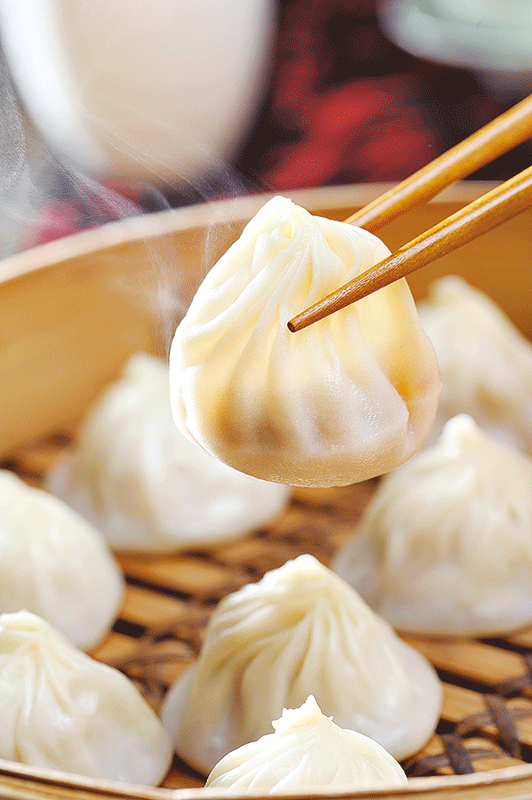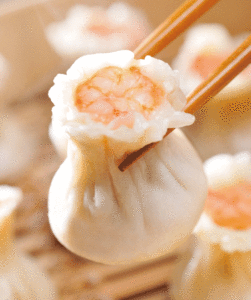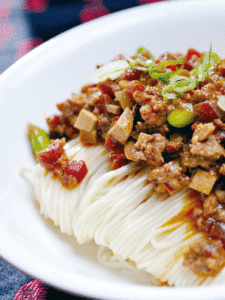 It’s always fascinating when something humble is elevated to international fame and status. Such is the case with a small shop that started in Taipei in 1972 and the little soup dumplings that eventually earned them Michelin status and a presence in eleven countries (and counting).
It’s always fascinating when something humble is elevated to international fame and status. Such is the case with a small shop that started in Taipei in 1972 and the little soup dumplings that eventually earned them Michelin status and a presence in eleven countries (and counting).
On a recent trip to Taipei, a friend told me that a can’t-miss restaurant was located across the street from the hotel where I was staying. Coincidentally it was in the mall level of Taipei 101, one of the tallest buildings in the world, and a spot I had definitely planned to visit.
Din Tai Fung was originally founded as a cooking oil retail business in 1958 in the Da’an district of Taipei. In 1972 during a downturn in business, founder Yang Bingyi and his wife decided to transform the shop into a steamed dumpling and noodle restaurant employing chefs from Shanghai (where soup buns are believed to have originated). In a city where these shops are extremely common, its particular quality and subsequent reputation allowed the business to add additional locations in Taipei.
 By 1993 the New York Times had included Din Tai Fung in a list of ‘best restaurants in the world’, effectively turning the Taipei location into a destination restaurant. In 2010, Din Tai Fung achieved a first for a Taiwan based restaurant by earning a prestigious Michelin Star for its first branch in Hong Kong (its second branch in was awarded the same distinction in 2013).
By 1993 the New York Times had included Din Tai Fung in a list of ‘best restaurants in the world’, effectively turning the Taipei location into a destination restaurant. In 2010, Din Tai Fung achieved a first for a Taiwan based restaurant by earning a prestigious Michelin Star for its first branch in Hong Kong (its second branch in was awarded the same distinction in 2013).
Today the company has satellite locations in Tokyo, Macau, Bangkok, Sydney and multiple locations in nine additional countries including the US and the UAE.
A common characteristic of the current restaurants is the mix of sleek and modern decor with wood and screen effects that bring to mind older architecture. Many are located in upscale financial or trendy shopping districts in their respective cities. In the Taipei 101 location, Din Tai Fung shares a mall with Cartier, Hermes, Harry Winston, Van Clef and Arpels, and many other stratospheric luxury brands.
In contrast to its exclusive neighbors, the Taipei 101 location is very definitely a restaurant of mass appeal. Business men in suits, locals and tourists of every stripe wait in an ever-present que for seating in the large restaurant. Wait times vary, ours was less than twenty minutes, but they can exceed an hour or more at particularly heavy times.
Once our number came up on the electronic board we were escorted to our table just across from the operating room like kitchen behind a very long glass wall. Behind the glass were scores of chefs in white, looking very much like surgeons because of the masks and caps that they all wore. They were feverishly creating what had to be thousands of little dumpling disks and noodles by hand. As I walked past, I saw one of the chefs do a quick rolling pin motion that produce a little dough disk that looked absolutely machine made. A trick he would perform for hours before and likely hours for after our dinner was done.
 Steamed dumplings are well known to fans of Dim Sum in the Unites States, but the little soup filled dumplings that have made Din Tai Fung famous are rarer. Known in Chinese as xiao long bao (literally, “little basket bun”) these are delicate, ping pong ball sized packets made of dough and filled with pork and a small amount of cubed broth gelatin. As the dumplings are steamed, the gelatin melts and creates the delicious soup surprise.
Steamed dumplings are well known to fans of Dim Sum in the Unites States, but the little soup filled dumplings that have made Din Tai Fung famous are rarer. Known in Chinese as xiao long bao (literally, “little basket bun”) these are delicate, ping pong ball sized packets made of dough and filled with pork and a small amount of cubed broth gelatin. As the dumplings are steamed, the gelatin melts and creates the delicious soup surprise.
Obviously prepared for international travelers, our waitress was wearing several discrete flag pins that indicated which languages she spoke.
The menu is organized into various good sized categories: Appetizers, Xiao Long Bao, Steamed dumplings (non-soup), Buns, Fried rice, Noodle soups, Wanton, Desserts, Rice buns and Drinks, and luckily dotted with many appetizing photographs of the available dishes.
 Our meal started with Oolong tea (which flowed throughout the meal) and small bowls of a light broth with tiny pieces of scallion. Up front, I have to say that many of the dishes were familiar, but delicate, not as salty and somehow cleaner in taste than many of the varieties that I have had in Chinese restaurants in the states.
Our meal started with Oolong tea (which flowed throughout the meal) and small bowls of a light broth with tiny pieces of scallion. Up front, I have to say that many of the dishes were familiar, but delicate, not as salty and somehow cleaner in taste than many of the varieties that I have had in Chinese restaurants in the states.
Our first appetizer was a small pyramid of pickled cucumber in a drizzle of chili oil. They were mildly sour and had just the right amount of heat. Then came a large serving bowl of shrimp fried rice with generous small pieces of egg and scallion; it was remarkably light and was enjoyed with several of the dishes to come.
Prior to the soup dumpling highlight, our waitress mixed small bowls with three parts house made vinegar and one part soy sauce with little bundles of ginger cut into the finest of slivers. Those were to be used in a recommended ritual of how to eat the xiao long bao…
The rookie mistake of popping the dumpling from steamer to mouth usually ends with a burned mouth and possibly soup on the table. Locals are always kind enough to help avoid this.
Ideally the dumpling is lifted with chopsticks and dunked into the vinegar/soy/ ginger then placed onto the spoon. A small hole is made with the chopsticks draining just a bit of the soup. Usually at this point the dumpling can be eaten whole without much damage. Repeat the process while mentally calculating the number of dumplings you can have given the number of your hungry dinner companions.
Though it was not my first soup dumpling, I can definitely see how this small item at Din Tai Fung has made a restaurant empire. The steamed dough is thin, therefore easy to eat and the pork and broth inside is delicate yet decidedly flavorful. The ginger slivers in the soy and vinegar provide the only counterpoint needed.
Following the soup dumplings we chose a few other varieties filled with spinach and black mushroom, shrimp and pork (shumai), and added a side of some spinach-like greens called amaranth – each dish again was just delicate in flavor and yet very satisfying.
For dessert, we chose steamed buns filled with dark chocolate and another filled with red bean paste the latter seemingly scented with a tiny hint of vanilla.
While I was at the airport, I picked up a small gift for the friend that recommended the restaurant. In hindsight it really was an experience that shouldn’t be missed.
There are five branches of Din Tai Fung on the west coast; three in California and two in Washington. Closer to home Wu Chow in downtown Austin is a good bet for xiao long bao.
B1, No. 45, Shifu Rd., Taipei City (Taipei 101 Mall)
Telephone: +886-2-8101-7799
Website: www.DinTaiFung.com.tw
By Richard Arebalo
Features Editor OTL